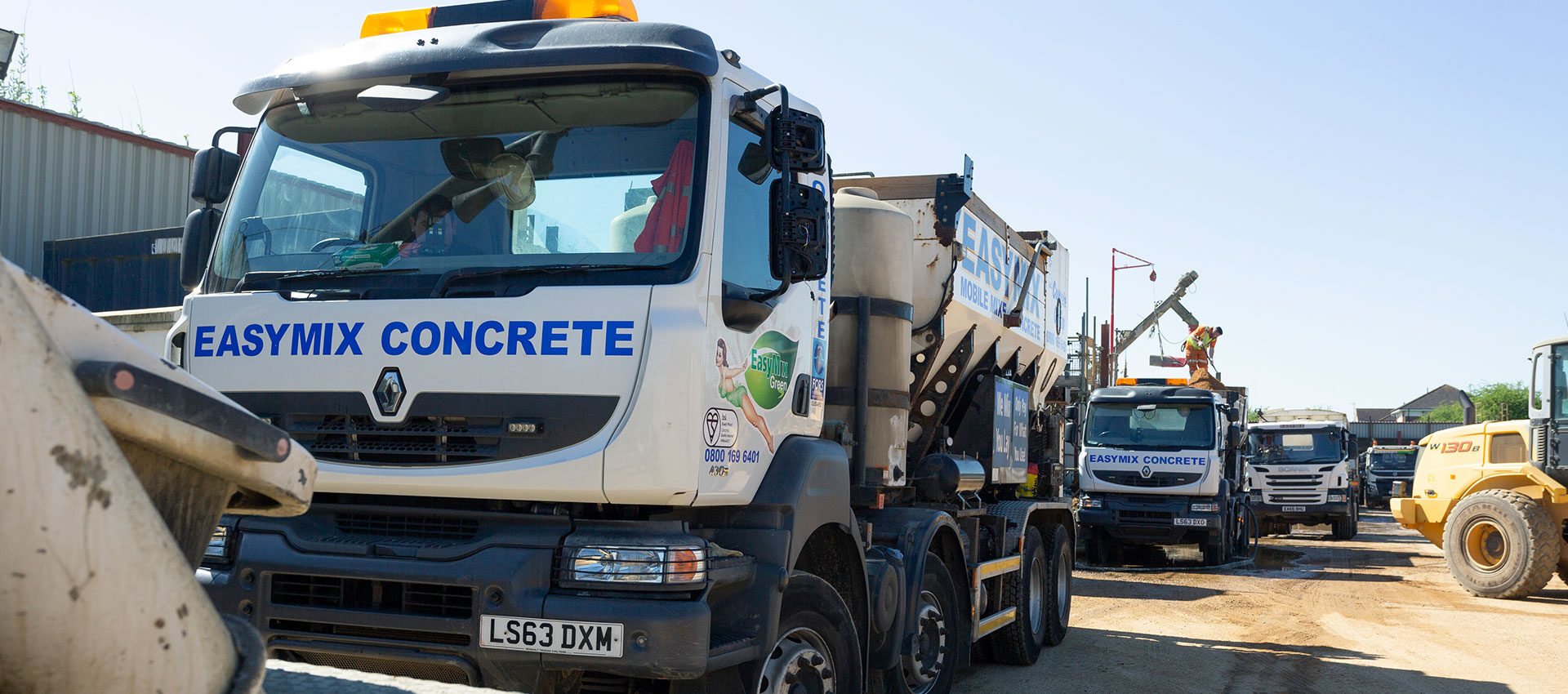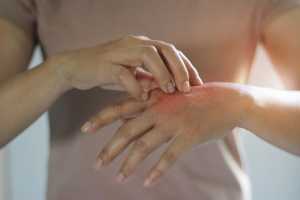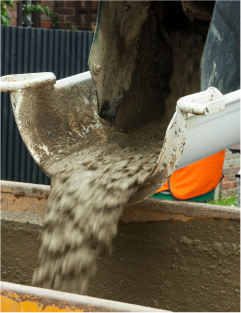
PROTECT YOUR SKIN FROM CONCRETE BURNS
Concrete burns can prove to be a major problem for those who work or have been working with concrete. Not only that but it could also impact employers as concrete burns may result in loss of workdays and subsequently, loss of trade. However, despite this being a major problem across the industry, it’s an issue which can be easily prevented, when the correct procedures are put in place. It’s paramount that workers know exactly how to treat concrete burns in an efficient and timely manner.
EasyMix Concrete are on hand to ensure that you know exactly what concrete burns are, how to treat them and how to prevent it from happening again.

What causes concrete burns?
Concrete burns are caused by skin coming in direct contact with wet concrete. Dry cement contains calcium oxide which is relatively harmless. However, when water is added to it, an extremely alkaline (reaching a pH of 13) substance is formed – calcium hydroxide. The natural pH level of human skin stands at 5.5, this means that if we come into direct contact with substances that are of a high level of alkalinity, our skin can burn; much like it would if we touched something which was highly acidic.
Wet cement can be highly abrasive as it has the ability to absorb the moisture from the surface of our skin. Not only can it cause severe irritation but it can even cause allergic dermatitis.
Cement burns are notoriously difficult to spot. This is because the person who has any cement burns may not feel any pain, nor will any physical signs emerge. The danger here is that this allows wet cement to stay present on the skin for a prolonged period of time, thus causing significant damage in the meantime. Physical signs will begin to show after a few hours – you must look out for:
- Red, blue or purple discolouration at the burn site
- Visible inflammation
- Blistering
- Rashes and other signs of skin irritation
How to treat concrete burns
It’s important that all burns are treated as soon as possible, and all those who work with concrete should know what to do in the event that one comes into direct contact with wet concrete.
- If clothing has become splashed with wet concrete, then carefully remove them, and rinse the clothing later.
- Do not touch the burn site or areas surrounding it.
- Brush off any dry cement, whether from clothing or the skin.
- Once the burn site is exposed, run it thoroughly under a cold tap for 20 minutes.
- To neutralise the alkalinity of the cement, either add a splash of vinegar or citrus to the water, and soak the affected area in it.
- Now is the time to seek professional medical advice.
- Monitor symptoms over a period of a few days and contact your doctor if the burn isn’t healing properly or it has an unpleasant odour.
How to prevent concrete burns
There are several things that can be done to reduce your chances of acquiring a concrete burn, including:
Issuing correct safety equipment
Protective clothing is essential when working with concrete, this will ensure that wet cement won’t splash on exposed skin or in your eyes or mouth. If you work with concrete, you should be supplied with:
- Goggles or safety glasses (with side shields)
- Alkali-resistant gloves (such as butyl or nitrile gloves)
- Buttoned, long-sleeve shirts (with cuffs tucked inside the gloves)
- Overalls (tucked inside heavy-duty boots)
- Waterproof pads – these are to be worn between fresh concrete surfaces and hands, knees and elbows
Having sufficient safety rules
Adhering to rules and regulations in the workplace can ensure your employees are kept safe at all times. Therefore, it’s important that there are appropriate guidelines in place, including:
- All jewellery should be removed, including watches – wet concrete has the potential to become trapped against the skin.
- Short-sleeve shirts and shorts should be prohibited when working with concrete.
- Robust footwear should be worn at all times.
- All splashes and spillages should be reported immediately.
- Follow specific procedures when it comes to administering first aid in the event of a concrete burn.
- Ban workplace cleaners that may be abrasive, such as sensitisers (lanolin, limonene, perfumes) and irritants (alcohol).
Supplies to help with the administering of first aid
It’s important that your workplace is well-equipped to deal with concrete burns when they occur. Having the correct supplies on-site means that you’re adequately prepared at all times, in the event that someone should develop concrete burns. The supplies you will need are:
- 5-7 gallons of clean running water (approximately 23-32 litres) – water should be changed daily.
- pH neutral soap – this will sufficiently neutralise the effect of concrete burns.
- Buffering solutions or sprays – this will neutralise surface skin that has come into contact with wet concrete.
- Full range pH indicator papers (pH 1-14) – these will give accurate measurements of the skin’s pH and other surfaces in and around the workplace.
Adequate training for employees
It’s important that both employers and workers are properly informed in terms of what to do when either themselves or someone else develops a concrete burn. The training should include:
- Looking for signs and symptoms of concrete burns and dermatitis.
- Finding skin problems as early as possible to stop them from developing further.
- Knowing how to administer first aid to someone who has a concrete burn.
- Ensure rules and regulations are being followed by all.
- Adequate health surveillance to be done by a responsible and reliable person.
- Keep all health records, including accident books – concrete burns should always be logged.
Here at EasyMix Concrete, we’re dedicated to providing both commercial and domestic concrete services to customers throughout North London, Hertfordshire, Bedfordshire, Buckinghamshire, Northamptonshire and the surrounding areas. From concrete floors to on site mixed concrete, our team of professionals will be able to help.
We endeavour to work safely with the concrete we pour and lay, enabling us to keep the safety of our clients at the forefront of our minds, thus protecting them against developing concrete burns themselves. If you’d like further information about how we can help with your project, no matter how big or small it is, get in touch with a member of our team today – we’re always happy to help.
Call us on 0800 169 6401
Locate your nearest branch
Find out if we deliver concrete to your area
Concrete Calculator
Calculate how much you will need
fast, reliable delivery!

This website uses cookies to enhance your browsing experience and deliver personalised ads. By clicking “Accept All Cookies”, you agree to the storing of cookies on your device to enhance site navigation, analyse site usage, and assist in our marketing efforts.


